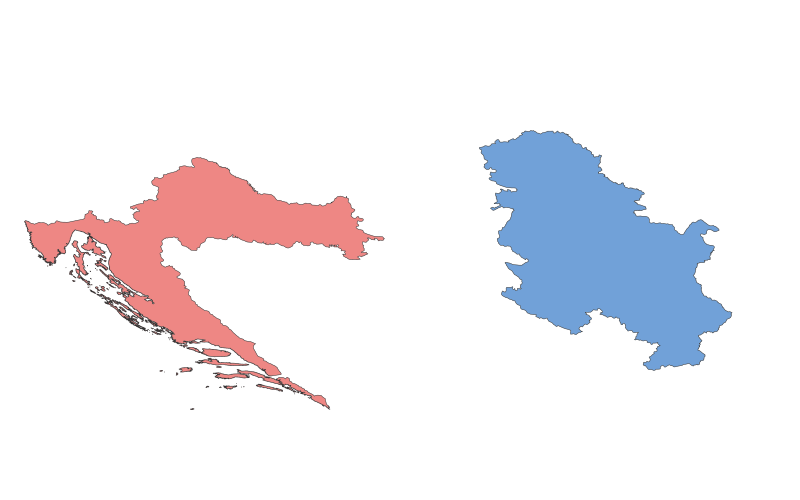Croatia vs. Serbia: A Geographical Comparison

Geographical Comparison Table
| Category | Croatia | Serbia |
|---|---|---|
| Location | Southeastern Europe, bordering the Adriatic Sea | Landlocked in Southeastern Europe, bordered by 8 countries |
| Size | 56,594 km² | 88,361 km² |
| Climate | Mediterranean (coast), Continental (inland) | Continental (hot summers, cold winters) |
| Natural Resources | Oil, bauxite, hydropower | Coal, natural gas, copper, arable land |
| Urban Development | Coastal cities like Split, Dubrovnik; capital Zagreb | Capital Belgrade; Novi Sad, Niš as major cities |
| Transportation | Well-developed coastal highways, international airports (Zagreb, Split) | Extensive rail network, Belgrade as a regional hub |
Description of Croatia and Serbia
Croatia
Croatia, located along the Adriatic Sea, is renowned for its stunning coastline, historic cities, and Mediterranean climate. Its history is deeply intertwined with the Roman Empire, Venetian Republic, and later, the Austro-Hungarian Empire. Culturally, Croatia is influenced by Central European and Mediterranean traditions, with a strong emphasis on music, art, and cuisine (like seafood and olive oil). Economically, tourism is a major driver, alongside shipbuilding and agriculture. Croatia joined the EU in 2013, boosting its economic integration.
Serbia
A landlocked country in the Balkans, Serbia has a rich history as part of the Roman, Byzantine, and Ottoman Empires, and later Yugoslavia. Its culture blends Slavic traditions with influences from its diverse past, evident in its Orthodox Christian heritage, folk music, and cuisine (such as ćevapi and rakija). Economically, Serbia relies on manufacturing, agriculture, and energy production. While not an EU member, it is a candidate country and maintains strong ties with both Europe and Russia. Belgrade, its vibrant capital, is a cultural and economic hub.
Both nations share a complex historical relationship, marked by their roles in the Yugoslav Wars, but today they are distinct in their geographical and cultural identities.